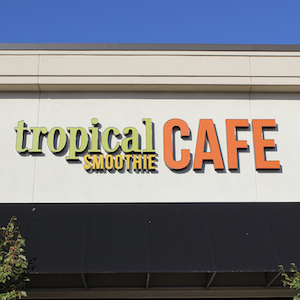Research by Adams Street Partners finds no evidence of sponsor-to-sponsor underperformance and that sponsors are a real and relevant source of deal flow for other sponsors. Moreover, such deals appear to offer stable returns with lower losses than non-sponsor deals.
Research by Adams Street Partners finds no evidence of sponsor-to-sponsor underperformance and that sponsors are a real and relevant source of deal flow for other sponsors. Moreover, such deals appear to offer stable returns with lower losses than non-sponsor deals.
The report, Examining European Sponsor-to-Sponsor Transactions, published at the end of last year, suggests that investor skepticism towards sponsor-led deals could be misplaced, in part due to the limited amount of information available.
Adams Street looked at a 10-year data set of 500 realised deals in Europe between 2005 and 2015 and as one of its co-authors Mattias de Beau, Partner, Primary Investments, explains, the topic of how managers source deals is something that Adams Street seeks to understand during its due diligence process.
“Adams Street has been investing in Europe for over 20 years and we have the data to dig in to, to see if the negative perceptions surrounding sponsor-to-sponsor deals were justified,” says de Beau. “There is not much publicly available data on these deals so we decided to start by looking only at our European data to get a sense of how these transactions differ, and what performance has been like, over the last decade. Ultimately, are sponsor-to-sponsor less worthy or less valuable than those deals sourced directly from entrepreneurs?”
There are several interesting takeaways highlighted in the report.
Firstly, these deals are a material part of the European market, accounting for 50 per cent of deal value and 30 per cent of transactions.
“We’ve looked at similar data in the US and it looks quite similar. These deals are prevalent across all fund sizes but are a little more common at the larger end of the market.
“Another interesting finding was around returns. Sponsor-sourced deals appear to be more stable and offer lower losses, but less of an opportunity to deliver outperformance compared to deals sourced elsewhere: corporate carve-outs, public-to-privates, or direct deals with founders.
“But there was no material difference in the returns generated, overall. That was in line with what we always thought here at Adams Street.”
One of the criticisms raised in relation to sponsor-to-sponsor transactions is that the buyer overpays for the asset. There could be a number of reasons for this. These are assets that have already been cleaned up and improved by a PE sponsor who might have put in place a stronger management team, improved KPI reporting etc, and taken out some of the operational risks associated with buying directly from founders of businesses.
It is also possible that these deals are sold in very efficient processes by sellers who know exactly what they are doing, which has perhaps led to higher pricing as well.
“Just because one sponsor has owned an asset, it doesn’t mean they’ve done all that they can to improve the value of the asset. As the PE market evolves and deepens, you might have a small manager who sells an asset to a mid-market manager who in turn might sell it on to a pan-regional or global manager,” suggests de Beau.
Apart from 2005, sponsor-led deals were consistently higher, with an EV/EBITDA entry multiple of 10x compared to just above 8x for non-sponsor deals, with 2014 showing the highest gap (approximately 12x compared to 8x).
“This study involved a broad sample of 500 realised deals spanning 2005 to 2015 and so it will contain some outliers,” explains de Beau. “It will be related to specific deals in our portfolios and it’s hard to draw too many conclusions from a specific year, but the long-term trend does seem to suggest that sponsor-led deals have priced higher.
“We didn’t factor in any unreleased deals, which is why the data set only goes up to 2015.”
With respect to performance, sponsor-to-sponsor deals were found to display a lower propensity to outperform: 15 per cent versus 30 per cent home-run rate by invested capital. As such, these deals appear to offer a more banded return profile with lower downside risk and capped upside.
De Beau says that the team was not expecting as big a difference between the two, particularly in respect to homerun rate.
“A previously sponsor-owned business will likely have had operational fixes to make it a more sound and stable business,” he says, “which then makes it easier to due diligence. One of the nice things about buying from a sponsor is that at some point you know the manager is going to sell the asset. You can look for assets that fit your sector expertise and you can start to develop relationships with a company’s management team well ahead of doing a potential sponsor-sourced deal.
“That can remove some of the unknown risks that you might encounter buying from non-sponsors. However, there are hidden gems that one can uncover buying from founder-owned businesses, which is why non-sponsor deals have a higher homerun rate and a higher loss rate.”
This is only one data set and one snap shot in time but de Beau hopes that the research report has helped clear some of the misconceived views around sponsor-led transactions.
“The research hasn’t changed the approach we take to investing but it can help with manager selection – picking GPs with operating skill as well as sector expertise to deliver performance, irrespective of how they sourced the deal,” he says to conclude.






